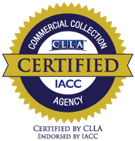
Deciding to hang out a shingle is a nerve-wracking leap into the unknown. You obviously need enough salary to sustain your lifestyle but you also face the delicate challenge of not scaring away potential clients. Trying to decide what to charge for your services and how to invoice new clients doesn't have to take too much brain power.
Here are a few tips to set rates for your freelance business and invoice your clients.
What should I charge for freelance work?
This is one of the first questions an independent contractor or freelancer will think about when they decide to branch out on their own. What a client will pay depends on what service you'll be providing, the market for that service, the size of the client, if it's a project with a finished timeline or if it's hourly, and your experience. Having an idea of what your previous employer charges for the same work will also help answer what a client will pay. The price range for what you're offering could vary greatly so there really is no single answer.
An informative Forbes magazine series suggests that the best way to set your rates isn't to determine what a client will pay but what will you charge. As an independent contractor or freelancer, you may already have an idea of a salary range for your position. You will also have an idea of your budget and how much time you are willing to devote to your clients. If you want to work day and night, you may be willing to take on lots of low-paying gigs. If you want to still have a work/life balance or grow a nest egg, maybe you need to figure out what your time is worth. Do you need to devote more time to improving your skills so you're able to charge more to match your budget? Can you take on lower paying jobs now, while improving your skills, so you can seek higher paying clients later? Is an hourly rate a good place to start so you can build up to project pricing later? The answers to these questions will help set freelancer rates.
How do I Invoice Clients?
Small business owners, freelancers, and independent contractors typically depend on invoicing software such as Quickbooks or Microsoft Dynamics. These programs will walk you through invoicing clients and require certain information such as:
- Your business name
- Your company logo
- Company information
- contact name
- address
- phone number
- website
- Client information
- contact name
- address
- phone number
- email address
- Invoice number - decide on a numbering system that you can use into the future
- Date of the invoice
- Due date for the invoice - refer to your agreement for terms (due upon receipt, 30, 45, 60, 90 days)
- Description of the services provided
- Breakdown of work
- Dates work performed
- Quantity of hours worked
- Rate
- Subtotal
- Total cost of the services provided
- Payment options
- Tax id number
- Friendly message including any penalties for late payment or incentives for paying early
How Can I Get Paid On Time?
The best way to get paid on time is to communicate. If you have established a good relationship with your client contact, you should be able to discuss payment terms, expectations for invoicing, and when payment is expected. Not only that, all of these items should be included in the contract with your client. Can you ask to get paid up front or at least receive half of the payment up front?
Invoicing regularly is also a best practice in getting paid on time. Your client will have agreed in your contract when you will be invoicing and what the payment terms will be. If they are running behind on payments, send a friendly reminder letter using the template below. Don't be shy if you've done the work and they've agreed to pay. You do deserve to get paid on time.

Set a healthy budget, set your rates to support it, purchase helpful invoicing software, and communicate clearly with your client. Good luck as you step out into the world of entrepreneurship. The good news is that you're not the first to do it and, as the gig economy reveals, you won't be the last.




